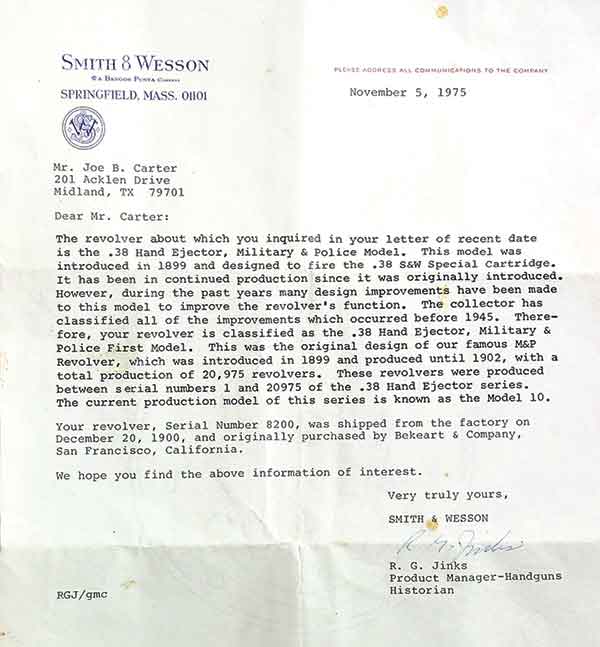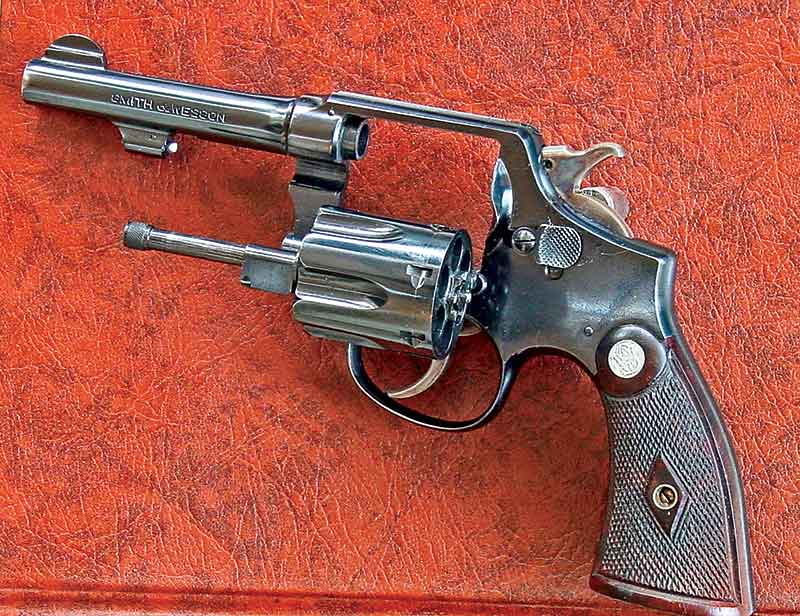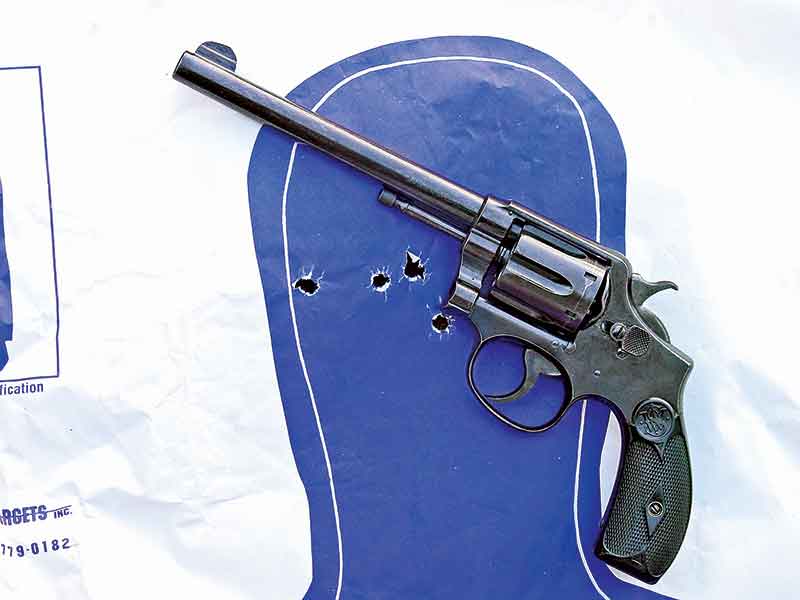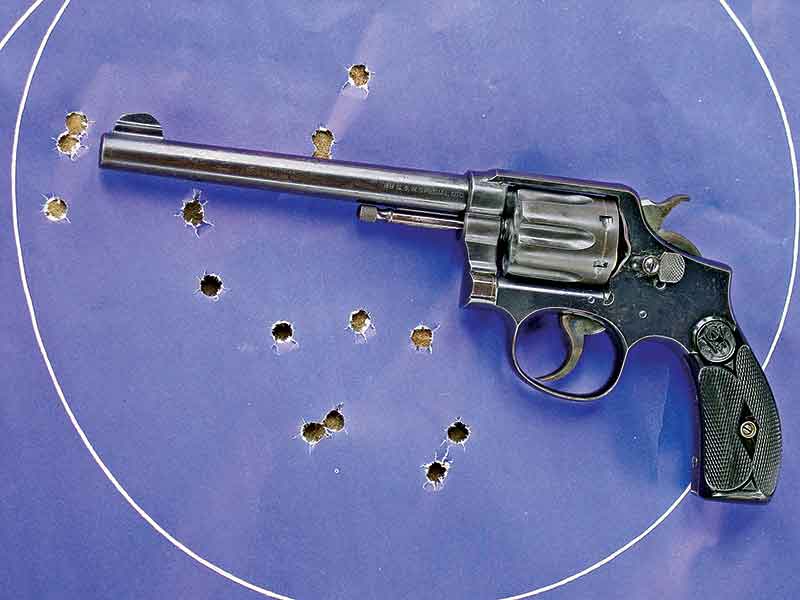Hand Ejectors
S&W's First Military And Police Was Special
Colt Patent Firearms had an 8-year head start when it came to solid-frame revolvers with swing-out cylinders. This began to change in 1896 when Smith & Wesson wrapped one of these around the new .32 S&W Long Cartridge. It was a singular beast with no frame-mounted cylinder latch, and the single locking lug riding the top strap in the same fashion as the Numbers 1 and 2 rimfire handguns of 40 years before.
The development of the first M&P, and particularly its .38 Special Cartridge, is generally mentioned in the same sentence as language about the fierce Philippine Moros and their resistance to American rule and .38 long colt bullets. Never mind the Moro rebellion didn’t start until 1901 and the .38 Special M&P came out in ’99. One has to imagine the Moros smelled a frame-up immediately after the defeat of Spain and went into pre-game mode.
The .38 Special boasted eight grains more bullet and three grains more black powder than the old .38 Colt/USA Army round. It seems unlikely a cannabis-fueled warrior struck by either round would be able to nuance the difference. Nevertheless, the .38 Special was an immediate and long-standing success. This prompted the early introduction of a smokeless powder loading of the 158-gr. round-nosed bullet. The long-standing belief among “gun experts” and editors of reloading manuals is the .38 Special wasn’t introduced until 1902 and the eponymous model of that year. For a long time the accepted date of introduction came down to which “foremost authority” yelled the loudest.
Resolution & Moving On
The sample revolver on-hand comes with a factory letter from Roy Jinks averring it’s chambered for .38 Special and was sent to Bekeart and Company, San Francisco, home of the Bekeart .22 Target Model. That is the predecessor of the S&W Kit Gun, by the by. It left the factory in December, 1900 and is one of 20,975 produced in .38 Special. That’s also minus 2,000 of those chambered in the old .38 Long Colt sent to fulfill orders from the Army and Navy at serial numbers circa-14,000.
The cylinder locks up on two points, the center pin into the breech and frame locking bolt. The center pin-ejector is free-standing under the barrel, absent the forward lug under the barrel present on all subsequent models and changes.
Most surviving examples suffer from sustained use, the very early black powder loads and corrosion from chlorate priming. This one is pristine by comparison. Carry-up and timing is perfect and the arm overall is free of corrosion inside and out. The original finish shows some “browning” but is largely intact. Amazingly, the gutta percha grips are intact without the usual missing piece. The front sight and sighting groove in the frame, like most of he Colts of the era, are miniscule.
Shooting It
The action is smooth with trigger pulls on the order of the later K-Frame models, particularly the “long action” favored by Ed McGivern. The small, round-butt grips and the tiny sight picture presented the major challenges later addressed by service and target models, although I found it easy to produce tight single-action head-shot groups at 50 feet and reliable center-mass hits double action at 25 yards. The equestrians and buck-board jockeys of yore shot from one hand so I did too. Smith K-cylinders were free of heat treating until about 1920 so, consequently, my loads were current factory standard-pressure round-nosed lead.
The .38 Military and Police First Model enjoyed a brief span in the sun but proved usable on the onset and a sound foundation for the M&P, K-Frame Target and Magnum improvements to come.











